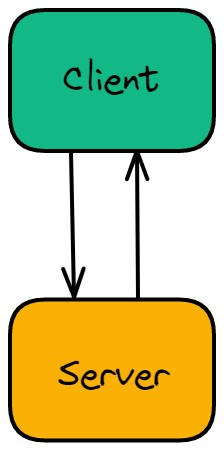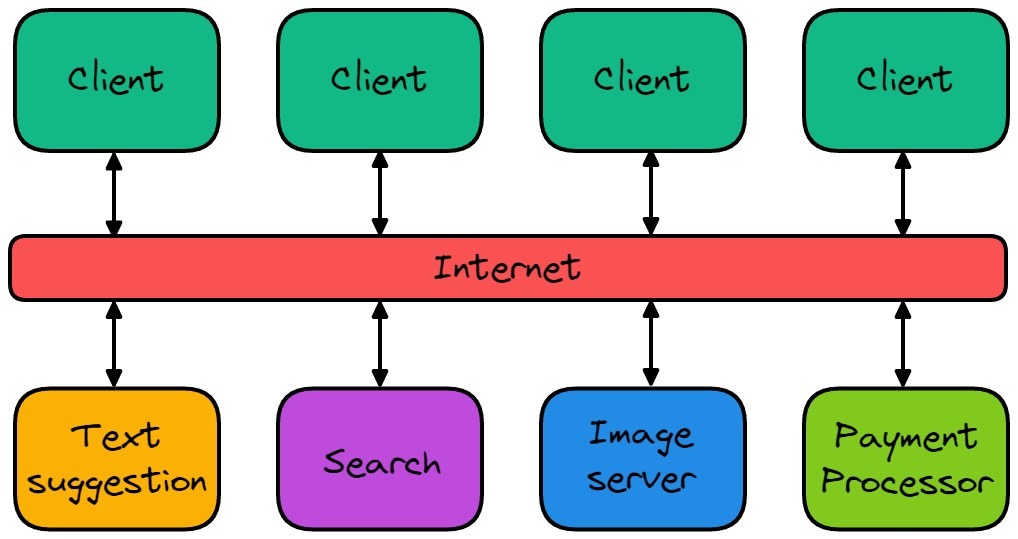Client-Server Architecture
Description
The Client-Server pattern is the simplest architecture pattern but is the foundation of many other patterns. It divides an application into two main components, the client and the server. The client is responsible for presenting the user interface and handling user input, while the server is responsible for processing requests, managing data, and performing other backend tasks.
The client and server are usually on separate machines and communicate over a network using a protocol such as HTTP or TCP/IP. The client initiates requests to the server, which processes the requests and returns a response to the client. This separation of concerns allows the client and server to be developed independently, making it easier to scale and maintain the application.
Diagram
At its most basic level, the Client-Server pattern consists of a single client and server communicating over a network.

However, in practice, there may be multiple clients and servers, as well as additional components such as load balancers, caches, and databases.

When to Use
You should consider using the Client-Server pattern when:
- The data is stored in a central location and needs to be accessed by multiple clients.
- The application needs to be scalable and maintainable.
- The system load is highly variable and needs to be distributed across multiple servers.
Advantages
The main advantages of the Client-Server pattern include:
- Servers can be distributed across a network so that no single machine needs to provide all of the services.
- Critical files can be stored in a central location.
- General functionality can be available to all clients without needing to be implemented by all services.
Disadvantages
Some disadvantages of the Client-Server pattern include:
- Each server is a point of failure and might be susceptible to denial of service attacks or server failure.
- Servers can be expensive to setup and maintain.
- Performance can be unpredictable because it usually depends on the network as well as the system.
- Management overhead is increased if servers are owned by different organizations.